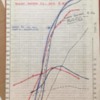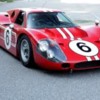Hope everyone is enjoying their cars this summer. Unfortunately, just as I was about to take my ’74 Pantera out after installing Pat Mical headers, we noticed that the engine is leaking antifreeze into the cylinders which would most likely be cause by a bad head gasket, cracked cylinder head or block. Let’s hope the block is good.
So, an engine rebuild is necessary. My concern is keeping the car original but the truth is that it has been modified a bit (fuel system, brakes, carb, ignition, suspension, exhaust, clutch, cooling system) but I don’t know if there have been any internal engine modifications.
Preserving the value of the car is important to me and the fact is that I don’t need a superfast Pantera, although I wouldn’t mind the car being faster.
So here are the questions. The advice of this forum is greatly needed and would be appreciated.
1) What is the cost of a moderate (stock) engine rebuild as compared to one allowing for 500hp/500 ft/lb torque?
2) My mechanic is suggests using Barnett Performance in Michigan but I have never heard of them and there is only one post on the board mentioning them but the owner didn’t use them. Can anyone provide information?
3) Preserving the value of the car is important to me. Assuming there are original internal engine parts, should I save them and do as close to stock rebuild as possible or should I rebuild the engine for more horsepower?
4) What engine builders are the best for these cars in terms of accountability, price, workmanship, etc?
5) Any thoughts in general as to 351C rebuilds would be welcome.
Thanks in advance.
Original Post



